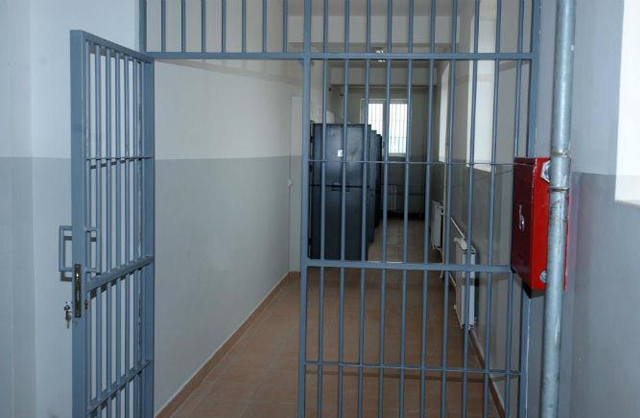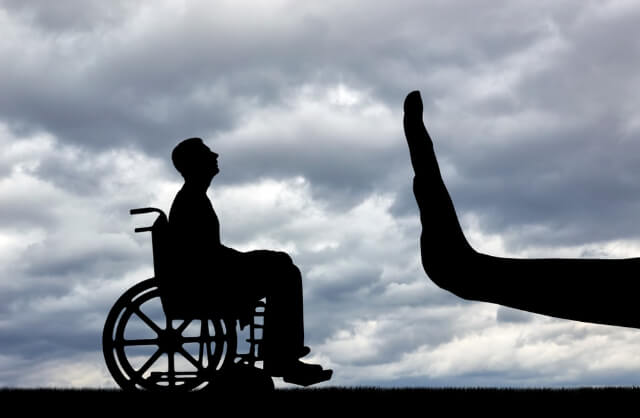Fecal water for the convicted and detained in the Kumanovo Prison
October 20, 2014

In the course of 2014 convicts serving their prison sentence in the Kumanovo Prison turned to the Helsinki Committee for Human Rights. The prison started operating in September 2013, and was promoted by the government as a facility in compliance with the European standards. Among other things, it was announced that the prison has its own water-supply and sanitary water heating systems.
From the discussions with the inmates of this institution, the Helskinki Committee came to a conclusion that they are facing serious problems due to the inappropriate living conditions. The problems of the about 300 convicted and detained persons referred to the lack of activities, the non-functioning of the separate rooms such as the hair salon, the room for religious ceremonies, the schoolroom, the library, etc. The complaints that the prison is often left without water for about two or three days, and that hot water was supplied at all, were particularly disturbing. In fact, the prison does not have a water-supply system or wastewater sanitary infrastructure. The water used for drinking, cooking, washing and bathing is brought in tanks. According to the information obtained from the convicts and the residents living in the vicinity of the prison, the well that the water is drawn from is in the village of Gradishte, Kumanovo region.
In the course of the month of September 2014, a convict from the prison supplied a bottle of water used in the prison to the Helsinki Committee. The water had an untypical colour and small pieces of unknown origin were floating in it. For these reasons the Committee proceeded to send the water to be laboratory tested whereby results were obtained that the water was not safe for drinking. Bearing in mind that the water was analyzed without meeting the technical requirements (a sterilized bottle and running the tests up to 6 hours upon its collection), the Committee located the well in the village of Gradishte in October 2014 and supplied a new sample which was sent to be tested by the Institute of Public Health in Skopje, in accordance with the technical requirements.
The house of the Simonovski family
In October 2014 we visited the family that lives in the immediate vicinity of the prison, for which one of the media outlets had reported that they are facing flooding of their home and yard from the fecal wastewaters released from the prison. [1] The walls of the house belonging to the family which consists of two spouses aged 80 are flooded from the bottom up to two meters of height. Their yard and garden are also fully flooded, and unpleasant odour can be felt in the vicinity. The family have stopped using the water for drinking, but they give it to the domestic animals they are keeping. Although the family contacted the competent authorities, the authorities either did not reply or proclaimed themselves incompetent regarding the case. In the course of the visit, in accordance with the technical requirements, a sample from the water of the family’s private well was also taken.
The canal that the wastewater is disposed from and the environment
The report on the laboratory tests ordered by the Committee and conducted by the Center of Public Health of the Republic of Macedonia of the water used in the Kumanovo Prison, states the following: “The tested sample of raw potable water DOES NOT MEET the laws and professional regulations for bacteriological analysis due to an increased total number of bacteria”. The report also states that the water has fecal pollution and that it has increased electrolytic conductivity. In addition it states that “it needs to be disinfected on regular basis in order for it to be used for drinking”. [2]
Regarding the tested sample of water from the well of the family living in the vicinity of the prison, it is also states that IT DOES NOT MEET the laws and professional regulations for bacteriological analysis due to an increased total number of bacteria and that there are indicators pointing to fecal pollution of the water. With reference to the physical and chemical analysis, the tested sample contains significantly increased quantities of nitrates, chlorides, iron and manganese. The tested sample of drinking water IS NOT FIT for safe human consumption [3].
The surroundings drenched in feces and waste
Because of this situation the Committee urges the sanctions enforcement judges, the Directorate for Enforcement of Sanctions, the State Sanitary and Health Inspectorate, the State Environmental Inspectorate and the Ombudsman to act immediately in accordance with their competences and prevent any possible spreading of contagious diseases and environmental pollution in the prison and its surroundings. In the course of this week the Helsinki Committee will address a letter to all previously stated institutions containing the violations of the corresponding legal provisions, the reports from the tested samples of water and photos illustrating the impact of the fecal water discharged into the environment and the private property in the vicinity of the prison.
[1] https://www.telma.com.mk/vesti/evropski-zatvor-bez-kanalizacija [MKD][2] Institute for Public Health of the Republic of Macedonia, Analysis Report Lab.No. 7404/2014, 17.10.2014 [MKD]


